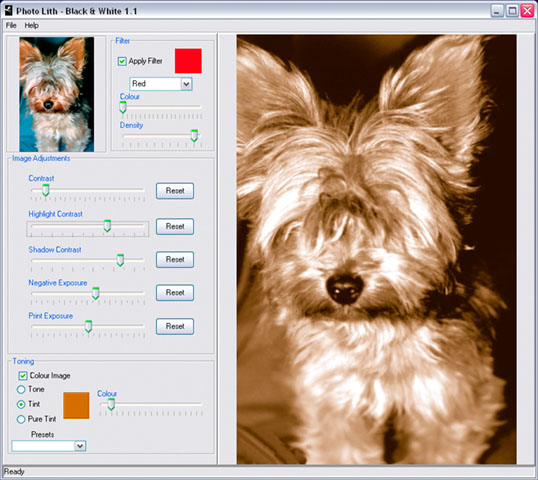
 |
||||||||||
|
This is the third application in the Photo Lith family. This was developed to produce Black & White images from colour digital files with similar controls to those used when taking traditional Black & White pictures with a film camera.
The first control in this application is Filter. This is the equivalent of using a coloured filter in front of the camera lens and alters the way different colours are recorded giving improved contrast between colours that would ordinarily record as the same shade of grey. A filter will lighten its own colour and darken opposite colours, for example a Red filter will lighten skin tones and darken the sky. This application gives you the opportunity to continuously alter the colour and density of a filter giving you fine control over how the image will look. A denser filter has a more pronounced effect than a pale one. The next set of controls allow control over the contrast of the image as a whole and also of the highlight and shadow contrast individually. Also in this set of controls are sliders that simulate altering the camera or 'negative' exposure and the 'print' exposure. Increasing the negative exposure or decreasing the print exposure will lighten the image and doing the opposite will darken the image. If you don't like the effect of your adjustments the Reset buttons beside each slider will restore the default settings. The final set of controls allows you to alter the colour of the final image. With this option selected there are three options. The first is Tone, this is the equivalent of printing onto a coloured paper where the highlights show the strongest colour. The second image is Tint, this leaves the highlights white while the colour becomes progressively stronger towards the shadows. The final option is Pure Tint, here the image is made up of only colour, there is no black, the shadows are pure colour. Examples of the Filters can be found here. |
|||||||||
©
Neale Clark 2006 |
||||||||||
